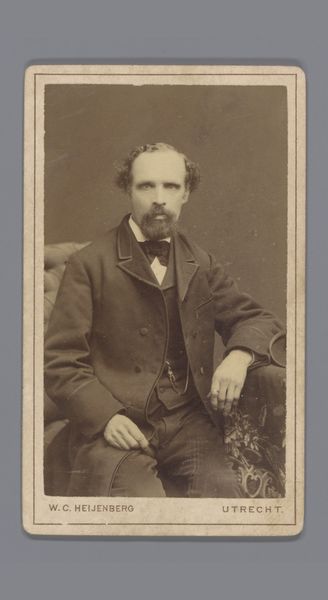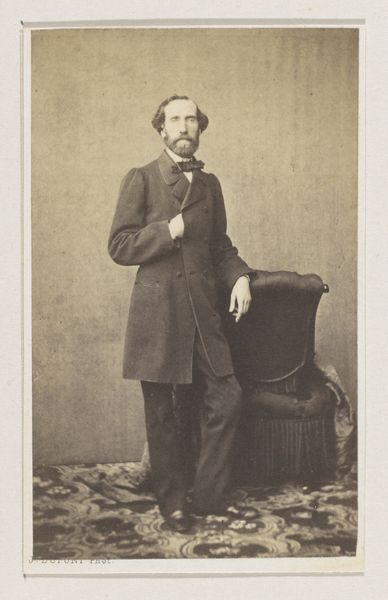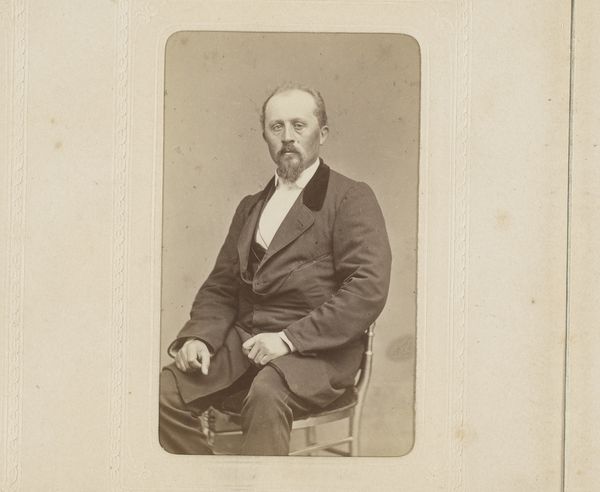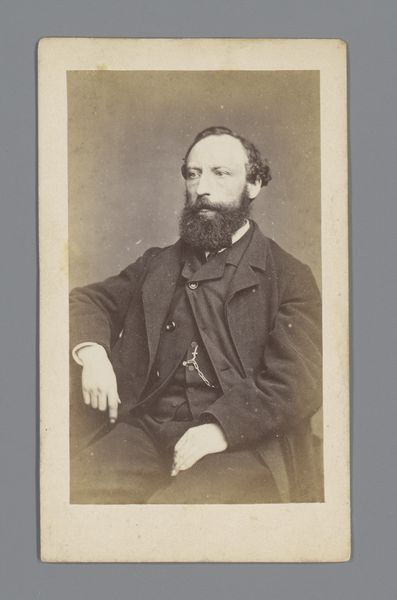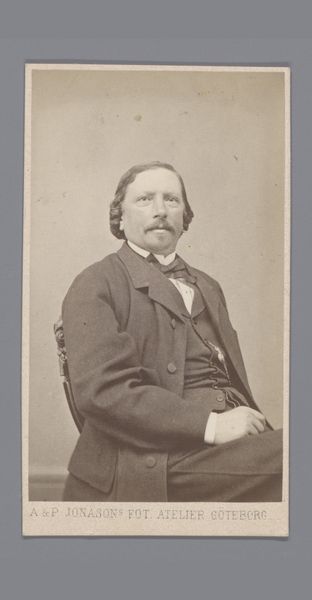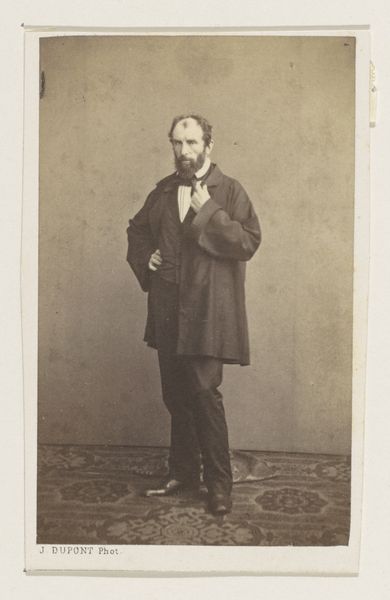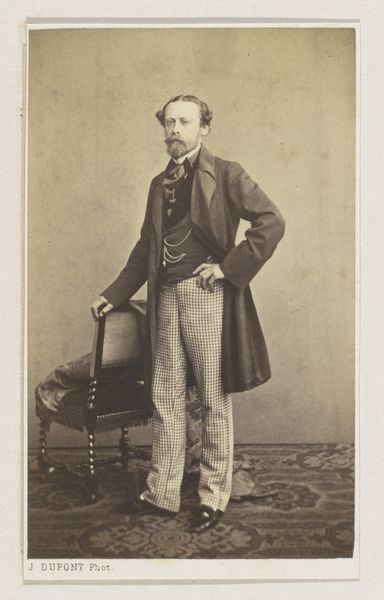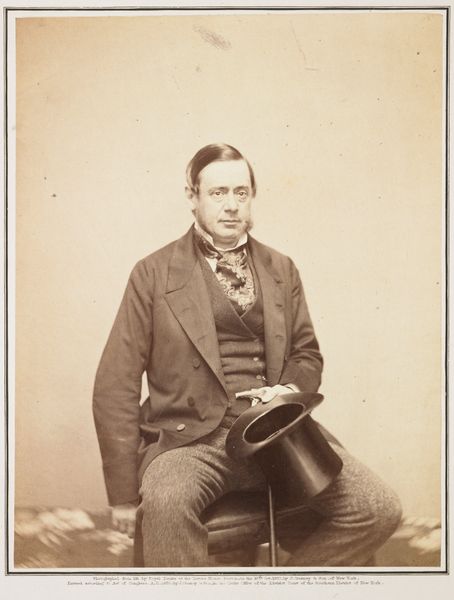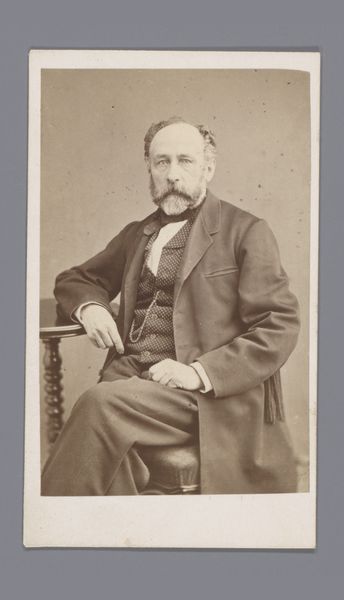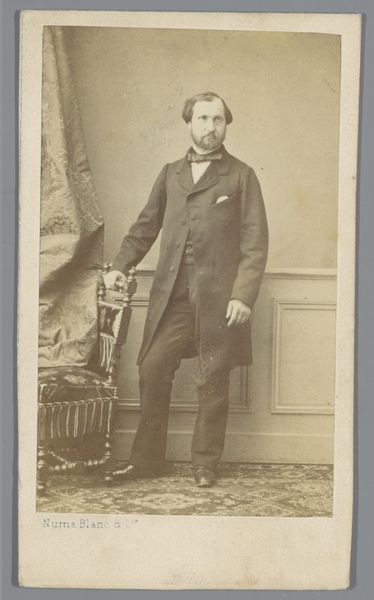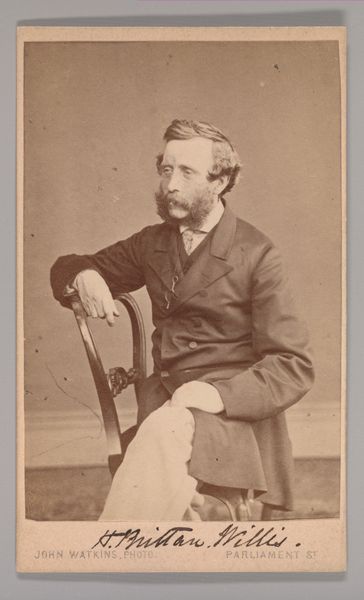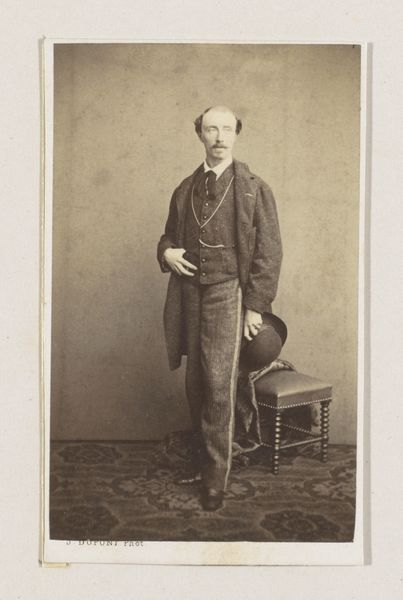![[Egron Sellif Lundgren] by John and Charles Watkins](/_next/image?url=https%3A%2F%2Fd2w8kbdekdi1gv.cloudfront.net%2FeyJidWNrZXQiOiAiYXJ0ZXJhLWltYWdlcy1idWNrZXQiLCAia2V5IjogImFydHdvcmtzL2M5YjgzYmE2LWIwZTYtNGY0Yy1hZTkxLTY3OTk4Y2YyNzI0MC9jOWI4M2JhNi1iMGU2LTRmNGMtYWU5MS02Nzk5OGNmMjcyNDBfZnVsbC5qcGciLCAiZWRpdHMiOiB7InJlc2l6ZSI6IHsid2lkdGgiOiAxOTIwLCAiaGVpZ2h0IjogMTkyMCwgImZpdCI6ICJpbnNpZGUifX19&w=3840&q=75)
photography, albumen-print
#
portrait
#
print photography
#
photography
#
men
#
genre-painting
#
albumen-print
Dimensions: Approx. 10.2 x 6.3 cm (4 x 2 1/2 in.)
Copyright: Public Domain
Curator: This albumen print, likely taken in the 1860s, captures the portrait of a distinguished gentleman by John and Charles Watkins. The inscription "Parliament St." suggests it was produced in their London studio. It is currently held at the Metropolitan Museum of Art. Editor: There's a melancholic air about this portrait, isn't there? The sepia tones, the slightly blurred edges—they create this impression of looking into the past, but a past tinged with a subtle sadness. I find it very affecting. Curator: Yes, the sitter’s direct gaze is engaging. There’s a certain uniformity in the clothing of the era: the dark suit, light trousers. But those full side whiskers are really interesting. They may convey status. A man of prominence signaling himself through adornment. Editor: His clothing does much of the work to shape our perception. Take away the waistcoat, the subtle chain hanging from the button, and it’s an entirely different narrative being told about status. Also, how precisely is his cane being positioned? Propped across his hand it almost comes off as a weapon to show defiance and control. Curator: That cane certainly lends to a certain persona. He possesses this sense of establishment, and even of constraint that resonates with a historical understanding of gender identity in the period. He holds it very casually. This photo almost attempts to negotiate power relationships as a symbol, or at least allude to one, but that symbolism might have also represented his position. Editor: Thinking of its semiotic structure, the albumen print itself is significant. As an early form of photographic reproduction, it was often used for portraits intended for mass circulation among family members. Curator: Right, these weren't just artworks, they were tools for maintaining connection and preserving lineage. As a photo image of a sitter they become a symbol, too, connecting one person’s lineage to the values and ethos of the society it inhabits. A very common but intimate tradition during that time. Editor: Precisely. It really goes to show how an image can become more than its subject; how it can encode and transmit meaning across generations. Curator: Definitely an experience, and the Watkins photography firm was important during that era in London. These clues create an experience when visiting an archive or museum setting and one gains deeper awareness on visual communication. Editor: Well, exploring that period and style of this composition made us consider not only what we're seeing but the whole context around it.
Comments
No comments
Be the first to comment and join the conversation on the ultimate creative platform.
